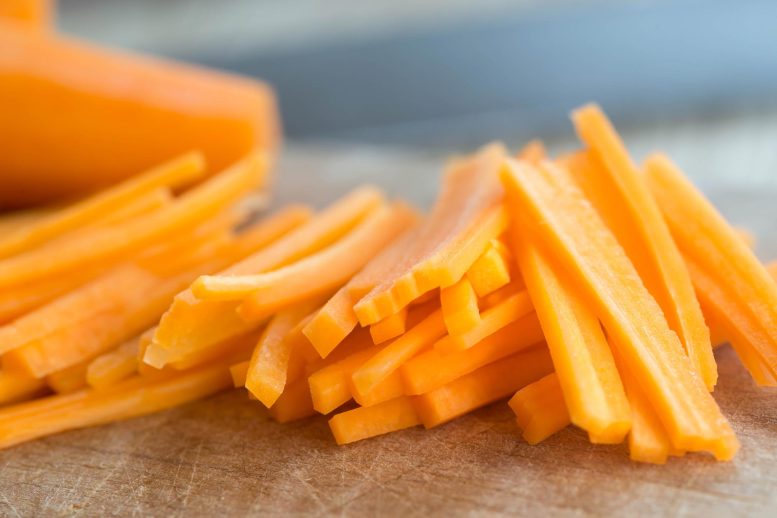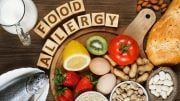
A University of Bath study reveals that residual stresses and dehydration cause chopped carrots to curl. Led by student Nguyen Vo-Bui, the research provides valuable insights for extending carrots’ shelf life and reducing food waste, showcasing an innovative application of mechanical engineering principles to food sustainability.
Research by undergraduates, carried out in a kitchen amidst lockdown, has the potential to minimize food waste and extend the freshness of vegetables.
Carrot pieces, neatly chopped, are a beloved snack enjoyed by people everywhere, serving as a consistent favorite in school lunches, picnics, and party trays throughout the year.
Now researchers from the University of Bath have uncovered the secret science of prepping the popular root veg and quantified the processes that make them curl up if left uneaten for too long.
Mechanical Engineering student Nguyen Vo-Bui carried out the research as part of his final-year studies, in the limited circumstances of the Covid-19 lockdowns of 2021.
The Research Process
Without access to labs, Nguyen aimed to identify the geometrical and environmental factors which have the most influence on carrots’ longevity. Working in his kitchen, he characterized, analytically modeled, and verified the aging of over 100 Lancashire Nantes carrot halves, cut lengthways, using finite-element (FE) models normally used in structural engineering.
The research team concluded that residual stresses and dehydration were the two key factors behind the curling behavior. The starchy outer layer of the carrot (the cortex) is stiffer than the soft central vein (also known as the vascular cylinder). When cut lengthwise, the two carrot halves curl because the difference in stress becomes unbalanced. Dehydration leads to further loss of stiffness, further driving the curling effect.
Recommendations and Applications
Their recommendations to manufacturers include handling carrots in cold, moist, airtight, and humidity-controlled environments to protect their natural properties and increase their edible life span.
They say the study provides a methodology to predict the deformation of cut root vegetables, adding that the procedure is likely to apply to other plant structures. The study gives food producers a new mathematical tool that could be applied to the design of packaging and food handling processes, potentially reducing food waste.
The Impact of Carrot Wastage
One of the world’s top crops by market value, carrots are known for their high production efficiency – but despite this, wastage is high. Around 25-30% of this occurs prior to processing and packaging – due to deformities, mechanical damage, or infected sections. Fresh-cut and minimally processed carrots are a convenient ready-to-use ingredient that makes possible the use of carrots that might otherwise be discarded, reducing food waste.
Dr Elise Pegg, a senior lecturer in Bath’s Department of Mechanical Engineering, is one of the research paper authors and oversaw the study. She said: “We have mathematically represented the curl of a cut carrot over time, and showed the factors that contribute to curling.
“Our motivation was to look for ways to improve the sustainability of carrot processing and make them as long-lasting as possible. We have produced a methodology that a food producer could use to change their processes, reducing food waste and making packaging and transportation more efficient. Understanding the bending behavior in such systems can help us to design and manufacture products with higher durability.
“A question like this would normally be investigated from a biological perspective, but we have done this work using purely mechanical principles. I’m so pleased for Nguyen – it’s a measure of his resourcefulness and dedication to produce such interesting research in a challenging situation.”
Personal Achievements and Future Directions
Over the course of a week, the curl of the carrot halves increased – with the average radius of each carrot’s curvature falling from 1.61m to 1.1m. A 1.32-times reduction in stiffness was also seen, correlating with the carrots drying out – on average, their weight fell by 22%.
Nguyen added: “This was interesting research – to apply mechanical principles to vegetables was surprising and fun.
“One of the big challenges was to devise an experiment that could be done in a lockdown setting, without access to normal labs and equipment. To now be in a position to have this work published in an academic journal and potentially be used by the food industry is really rewarding.
“This project has inspired me to continue my studies at the University of Bath and I now study residual stresses in porous ferroelectric ceramics for my PhD.”
As well as having to use a suitcase to collect the 30kg of carrots the experiment demanded from a farmers market, a further challenge was finding ways to use them afterward. Carrot cake, the Indian carrot dessert Gajar Ka Halwa, carrot pesto, and many other dishes kept Nguyen and his flatmates fed for several days.
Reference: “Modelling of longitudinally cut carrot curling induced by the vascular cylinder-cortex interference pressure” by Nguyen A. Vo-Bui, Benedict A. Rogers and Elise C. Pegg, 24 January 2024, Royal Society Open Science.
DOI: 10.1098/rsos.230420









Did someone actually get published and paid for this statement of the bleeding obvious that I learned on secondary school. Proof again that the level of education and “academia” is sinking faster than the titanic. Could be summarised in a single paragraph, but padded out with florrid language and pseudo-intellectual garbage.